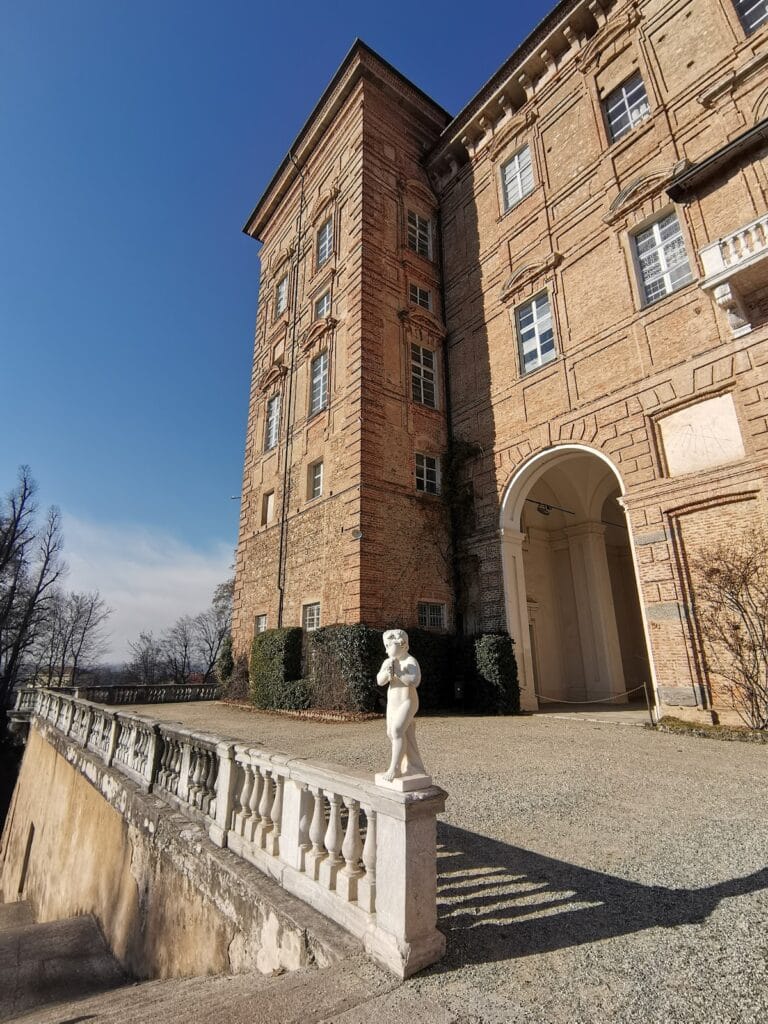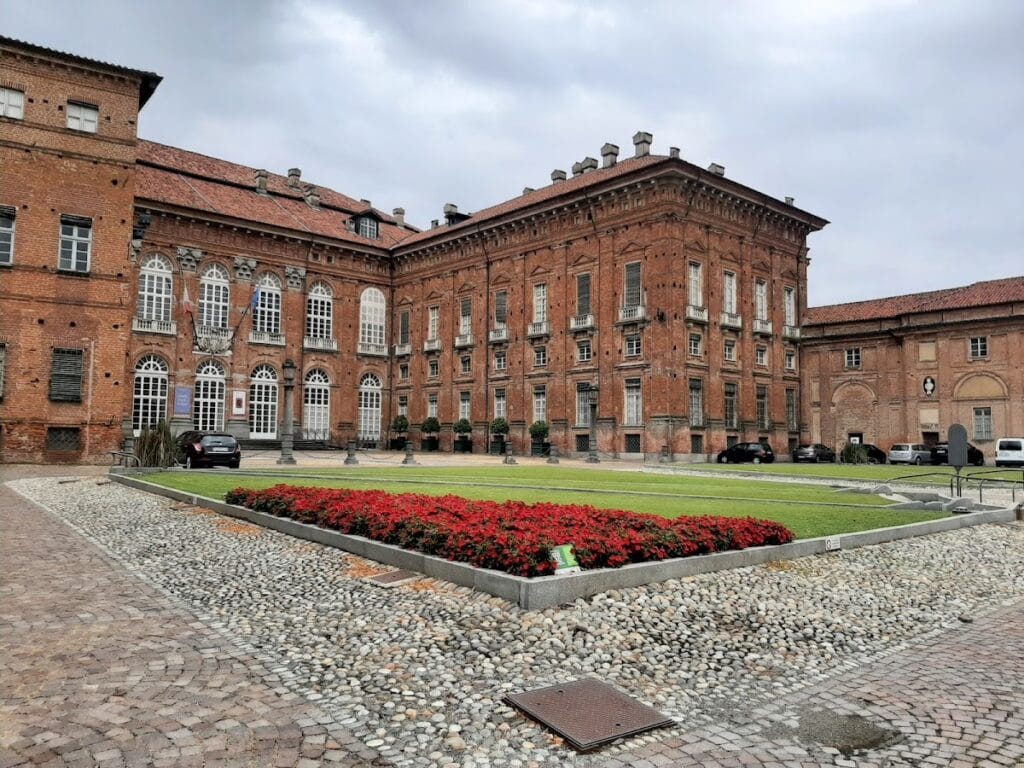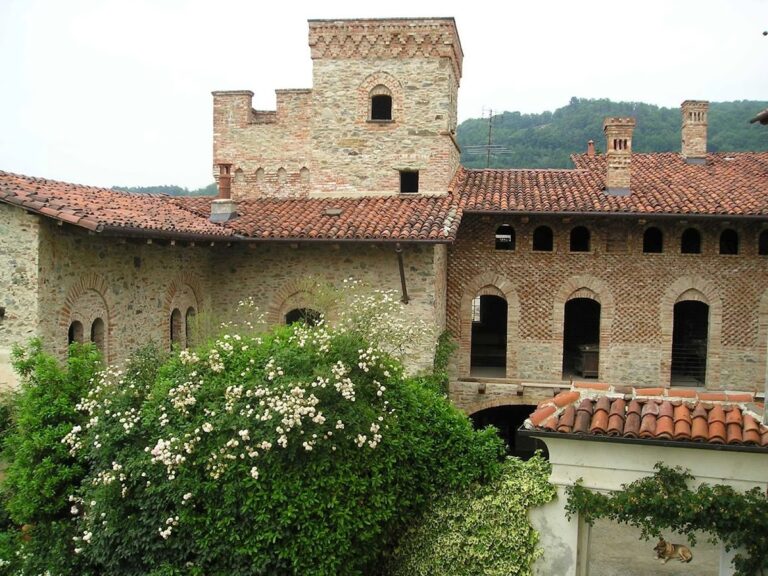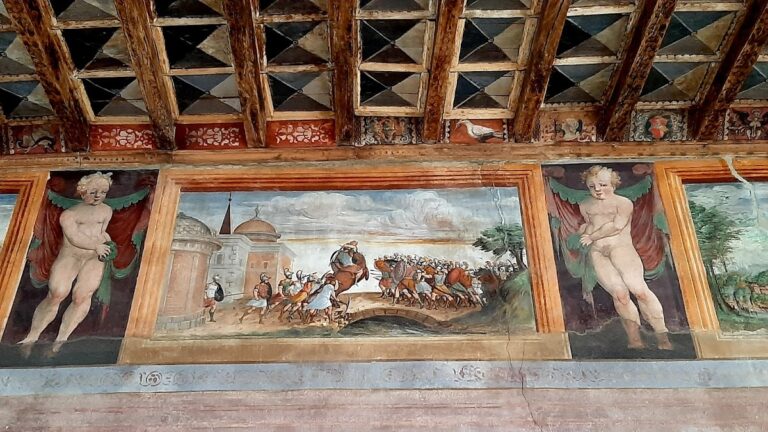Agliè Castle: A Historic Noble Residence in Italy
Visitor Information
Google Rating: 4.4
Popularity: Medium
Google Maps: View on Google Maps
Official Website: polomusealepiemonte.beniculturali.it
Country: Italy
Civilization: Unclassified
Remains: Military
History
Agliè Castle is located in the municipality of Agliè in modern Italy. It was originally built by the counts of San Martino, a noble family from the Canavese region, during the medieval period.
The earliest phase of the castle dates back to 1141 when it was constructed as a defensive fortress. It featured a typical medieval design with a central keep surrounded by a courtyard, garden, rural buildings, robust walls, and a moat. Throughout the 16th century, the castle preserved this fortress character despite undergoing episodes of destruction and rebuilding.
In 1536, the castle faced a violent siege and plundering episode. From the 17th century, under the leadership of Count Filippo San Martino di Agliè, the structure transformed from a military stronghold into a grand residential palace. Filippo, known as a scholar, choreographer, and political figure, was a supporter of the regent Maria Cristina of Bourbon-France during a notable political conflict. His imprisonment by Cardinal Richelieu in 1640 marked a turning point; after his release, Filippo devoted himself to restoring and expanding the castle.
Beginning in 1642, architect Amedeo di Castellamonte undertook significant redesign work. He added a new façade overlooking the garden, built two galleries, reshaped the courtyard, and introduced greenhouses that served as winter gardens. The castle became a venue for important visitors, including Maria Cristina herself.
The castle’s fortunes suffered in 1706 when French forces led by Marquis Louis d’Obuson de La Foyad destroyed it during the Siege of Turin. Afterward, only minor architectural work took place, such as the addition of a staircase in 1724 by the local architect Costanzo Michela.
In 1763, Duke Charles Emmanuel III of Savoy acquired the castle, granting it as an appanage to his son Benedetto Maria Maurizio, Duke of Chablais. Benedetto initiated a restoration led by architect Ignazio Birago di Borgaro, who invited artists from the royal Turin palace to adorn the interiors with sculptures and decorative details. Between 1767 and 1775, a prominent two-story gallery known as the “Gallery of the Tribunes” was constructed, connecting the castle to the nearby parish church and bell tower, which replaced the former town tower.
Under the Savoy family, the castle became a favored royal residence. Its gardens and park were redesigned with strict geometric patterns and included a striking water feature aligned along the estate’s longitudinal axis.
The castle’s status changed during the Napoleonic occupation starting in 1796. French troops looted the furnishings, the building was repurposed as shelter for the homeless, and parts of the park were sold to private individuals.
Following the Restoration in 1814, the castle returned to the holdings of the House of Savoy, passing to Charles Felix I in 1824. He oversaw new expansions and restorations by architect Michele Borda di Saluzzo, including the creation of a small theater. The interiors were elevated with valuable Murano glass and Bohemian crystal chandeliers.
After Charles Felix’s death, his wife Queen Maria Cristina Bourbon-Neapolitan resided there until 1849. Afterwards, ownership moved to Ferdinand of Savoy, Duke of Genoa, from a cadet branch of the dynasty. The castle served as an aristocratic retreat for the Savoy-Genoa line.
In 1939, Prince Thomas of Savoy-Genoa sold the castle to the Italian state. During World War II, it served as a secure storage site for valuable items evacuated from Turin.
Remains
Agliè Castle preserves key architectural elements reflecting its long history, beginning with its 12th-century origins as a fortified medieval stronghold. The original layout centered around a keep, surrounded by a courtyard and garden, all enclosed by defensive walls accompanied by a water-filled moat.
The 17th-century renovations by Amedeo di Castellamonte introduced a garden-facing façade that transformed the castle’s appearance from fortress to residence. Two galleries were constructed, enhancing circulation and light inside the castle. A newly designed courtyard complemented these changes, and greenhouses were incorporated as winter gardens, reflecting a shift toward leisure and comfort.
The extensive 18th-century works commissioned by Duke Benedetto included large residential apartments and the addition of an imposing two-story gallery called the “Gallery of the Tribunes.” This gallery physically connected the castle with the adjacent parish church and its bell tower, which replaced the former town tower. The park surrounding the castle extends over roughly 340 hectares and features both English and Italian-style gardens arranged with precise symmetry. A key highlight is the monumental 18th-century fountain representing the Dora Baltea river, crafted by Ignazio and Filippo Collino, which anchors the estate’s water features.
In the 19th century, the park expanded by about 30 hectares under the guidance of designers Michel Benard and Xavier Kurten. A large lake with islands and a smaller adjacent lake were added, complementing approximately seven kilometers of paths lined with ancient trees and diverse plant species. Surrounding the castle are rural buildings from the 17th and 18th centuries, including a mill known as Il Mulino, working farms called Cascine Valle, and a laundry area named La Lavanderia.
Inside, the castle contains around 300 rooms spread across four floors, many furnished with period antiques and artwork. Among these, the Sala delle Colonne currently functions as the ticket office and displays 18th-century stuccoes. The Salone di Caccia features decorative stuccoes portraying hunting scenes alongside 19th-century portraits of King Charles Felix and Queen Maria Cristina by the French artist Berger.
The Sala dei Valletti holds a notable 19th-century Murano glass chandelier illuminating stuccoes representing the goddess Diana, accompanied by paintings created by regional artists. The castle’s library houses a collection of approximately 7,000 old books and brochures covering art, German, and French literature.
Additional prominent rooms include the Sala degli Antenati, honoring ancestors; the Galleria d’Arte, designed for Charles Felix and containing sculptures by Benedetto Ciacciatori and others, with paintings illustrating the lives of Savoy rulers; and the Teatrino, a small theater with seating for 40, built in 1824 retaining its original wooden furnishings and decorations by Luigi Vacca.
The Sala del Biliardo, traditionally reserved for male guests, contains an ornate painted coffered ceiling, Empire-style furnishings, and a French billiard table dating to the early 20th century. The Sala d’Angolo displays a collection of Far Eastern weapons from Duke Thomas of Savoy-Genoa’s private collection, alongside elegant wood paneling and a genuine wooden coffered ceiling. The Duke of Genoa’s Study is a well-preserved 17th-century room featuring a lacquered floor patterned with palm leaves and six large antique cabinets gifted by Queen Maria Theresa of Austria-Tuscany.
The Salone da Ballo, also called the Hall of King Arduin, holds a massive chandelier originally designed for nearly one hundred candles. Its walls and ceiling are adorned with 17th-century frescoes by Giovanni Paolo Recchi, including a ceiling painting believed to depict Count Filippo San Martino di Agliè and Queen Maria Cristina Bourbon-France presented as the Virgin Mary.
The Sala Tuscolana exhibits sculptures by Giacomo Spalla and archaeological relics such as a marble floor dating to the 2nd century AD, which was unearthed from the nearby Villa Tuscolana near Frascati.
The chapel of St. Maximus (Cappella di S. Massimo), constructed between 1642 and 1657 by Amedeo di Castellamonte, features a square plan beneath an octagonal vault decorated with delicate stuccoes and 17th-century frescoes depicting the Life of the Virgin, painted by artists from Lugano. Charles Felix initiated restoration works in 1827, renewing the floor, walls, and altar while preserving the dome’s original decorations. The altar painting of St. Maximus is by Giovanni Claret from the mid-18th century. An ivory crucifix by Giacomo Marchino stands within the chapel, which also safeguards a valuable copy of the Shroud related to Charles Felix’s 1822 coronation. Historically, the chapel served as the site for baptisms of young members of the ducal family.
The Sala Gialla is a long corridor specifically designed to display paintings and sculptures, including busts and portraits from the castle’s apex period, with access originally restricted to men. The Galleria Verde, dating from 1830, preserves original curtains and houses collections of porcelain and alabaster. It contains paintings commissioned around the mid-19th century by Elisabeth of Saxony, the wife of Duke Thomas of Savoy-Genoa.
The Sala della Musica holds a distinguished polychrome wax bust of Princess Victoria of Savoy-Soisson crafted by Francesco Orco in the 18th century.
Other notable interior spaces include the Sala d’Attesa, Sala degli Stucchi, Sala Bleu, the Queen’s Bedroom (Camera da letto della Regina), the Queen’s Toilet Room (Sala di Toeletta della Regina), the Ospedaletto which served as a small hospital during World War I, and the King’s Apartment (Appartamento del Re).
The Galleria delle Tribune contains 72 portraits of knights belonging to the Supreme Order of the Most Holy Annunciation. These were commissioned by Queen Maria Cristina Bourbon-Neapolitan between 1845 and 1847 and painted primarily by Michelangelo Pittatore alongside artists Frigiolini, Malnate, and Pratesi.
The Sala Orientale, also known as the Sala Cinese, displays Duke Thomas of Savoy-Genoa’s collection of Far Eastern artifacts collected during his travels. Items include a golden Buddha statue, Japanese armor from the Edo period, Thai porcelain, a traditional Japanese rickshaw, and accompanying drawings. The room also features the carriage used by Victor Emmanuel II in his youth.
Together with the castle’s gardens, which blend Italian formal symmetry with naturalistic English landscape design, these features form a rich historical and artistic ensemble that reflects centuries of architectural evolution, noble residence life, and cultural heritage in northern Italy.










